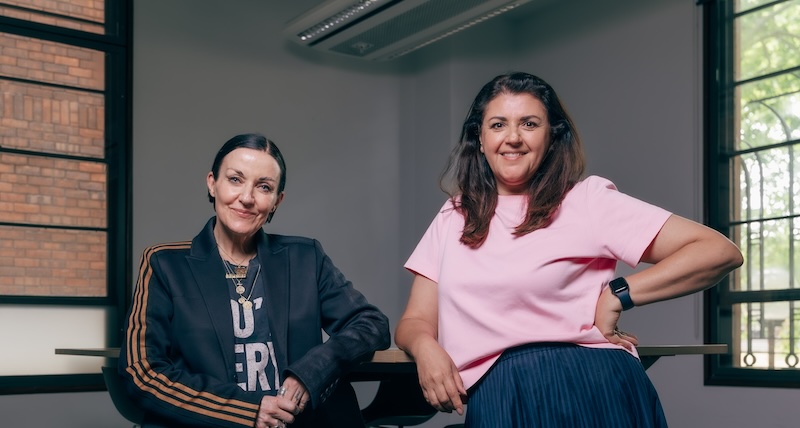Copyright Essence

Before André Leon Talley made his mark as a critic, a prolific journalist, and a longstanding force at Vogue, there was no blueprint. The self-actualized fashion savant rose within the ranks in New York City on his own terms. Talley, who by his own efforts pushed himself from his roots in Durham, North Carolina, to New York City and Paris, had a magnetic passion for clothing and an affinity for designers. He also always left a room transfixed by his persona. Talley’s passion and his creative kinship with countless lauded designers were a key part of what made him special–it also led him to the Savannah College of Art & Design, née SCAD, an institution that is a part of his legacy. André is largely known for his encyclopedic-like knowledge of fashion and also history. Fittingly, SCAD Fashion Museum of Fashion + Film’s latest exhibition, André Leon Talley: Style Is Forever, masterfully showcases the wondrous creations worn by André designed by the likes of Dapper Dan, Chanel by Karl Lagerfeld, Tom Ford, Yves Saint Laurent, Ralph Lauren, Vivienne Westwood, and more. The sublime exhibit nearly felt like getting a glimpse into Talley’s mind. Additional designers whose work was presented within the Atlanta gallery included Ralph Rucci, Prada, John Galliano for Dior, Versace, Riccardo Tisci for Givenchy, Savile Row tailor Richard Anderson, Isabel Toledo, and Nicolas Ghesquière, to name a few. Accessories were showcased as well from houses not limited to Roger Vivier, Manolo Blahnik, Gucci, Diane von Furstenberg, the National Association for the Advancement of Colored People, and Rod Keenan. “At SCAD FASH, 75 ensembles and personal treasures shimmer with his inimitable grandeur: scarlet silks, ecclesiastical capes, custom Tom Ford, tailored Ralph Rucci, opera coats from Dapper Dan,” SCAD President and Founder Paula Wallace shared. “André’s wardrobe served as his sanctuary, yes, but also his sermon. A longtime member of Harlem’s Abyssinian Baptist Church, he understood fashion’s power to uplift, astonish, and proclaim identity.” Wallace adds that in this exhibition, you are able to capture a glimpse of the man who “curated cultural moments through magazine pages and covers.” President Wallace also expressed that Talley anointed designers with his approval, who went on to leave an imprint on the world. For example, the first haute couture show Talley ever attended, Yves Saint Laurent’s in 1978 is paid tribute in the exhibit. What came after this presentation was a seemingly lifelong friendship between Talley and Saint Laurent. The gallery presents this relationship through two exquisite caftans designed by Tom Ford who was Yves Saint Laurent’s creative director from 2000 to 2004. One caftan was designed based on a look worn by Liya Kebede in the house’s Spring/Summer 2002 collection. It was paired with a hat by German designer Hutkönig Regensburg, while a second look, a caftan designed in a regal golden hue with cream detailing, was designed by Tom Ford from his first collection for Yves Saint Laurent’s Spring/Summer 2002. Another head-turning look consisted of a Gucci X Dapper Dan reversible gold brocade caftan. This design immediately captured my attention as we walked through our private tour the same day of the exhibit’s official opening in October. Designer Daniel Day known by many as Dapper Dan, is synonymous with street fashion–the inclusion of this ensemble is a core example of Talley’s sensibilities and his superb taste level. The reversible caftan features golden and red detailing–it was worn by Andre to the premiere of his film The Gospel According to Andre by Kate Novack. According to the exhibit’s accompanying catalogue, Talley was “especially proud to wear this garment by a Black designer who he felt was finally beginning to receive proper due and respect from what Andre dubbed the ‘cruel beast’ of the fashion world.” André Leon Talley: Style Is Forever also delved deeper than being aesthetically stimulating; there are sound bites of Talley that greet you as you make your way through the intentional gallery space in Atlanta. That’s not all; SCAD alumnae and commissioned sculptor, Stephen Hayes, created custom mannequins in Andre’s likeness. This special touch added to the legacy-making exhibition. With these mannequins, it felt as though Talley was looking upon each of us as we made our way through the striking spaces within the gallery. The entirety of the gallery felt as though you were walking through somewhat of a time capsule. Talley’s glamorous sensibilities and his larger-than-life persona shined through in each room. One wall in the gallery was fitting as it showcased ephemera from Talley’s home in White Plains, New York. Minutes after a private tour of the SCAD Fashion Museum of Fashion + Film, Gomes, the exhibition curator and creative director, tells me he met Talley in Marrakesh around 2014 during a taping of an episode of “America’s Next Top Model” and they immediately bonded due to the savant’s encyclopedic knowledge of fashion. “I was a fashion nerd [and with André] you would be bombarded with knowledge.” The two were seemingly kismet spirits. Notably, when they me,t Gomes was working with Vivienne Westwood in London. Their relationship continued and blossomed, especially as André began piecing together what would turn into “Dress Up Story—1990 Until Now,” a 2015 exhibit centering around Westwood’s beloved designs. Gomes says he was offered his current SCAD position due to Talley. He also mentioned that they also continued working together for years. This latest collaboration, even though Talley did not live to see the glorious pieces from his past feels full circle and matchless. Gomes tells me that key pieces were gathered roughly six months following André’s death in 2022. According to Rafael, conversations about a dedicated exhibit centering Talley took place pre-COVID. Boxes of clothing in addition to archival items such as photographs, were inside Talley’s home; SCAD utilized many of these items for André Leon Talley: Style Is Forever. Gomes also expresses that rather than keying in on the designers that Talley had a longstanding relationship with within an exhibit, settling on a larger theme, the breadth of experiences, clothing, images, stories, and also paraphernalia associated with Talley was more worthwhile. To Gomes, Talley’s exhibition and his story are tremendous examples of how far he came from his humble background in the Jim Crow South, where he was raised by his grandmother, Bennie Frances Davis. The curator is hopeful that those who visit the space leave realizing how tremendous Andre was. “He fought through systematic racism, homophobia, and he opened the doors for so many people–he’s a hero,” Gomes added. Each item within the exhibit was placed intricately and positioned in a manner that guides visitors on an unforgettable journey through some of Talley’s most prized possessions. With the photographs, beloved quotes from figures such as the founder of fashion retailer Moda Operandi, Lauren Santo Domingo, and emotional ephemera not limited to eloquent caftans plus chic suiting, chosen to be displayed, each item was handpicked due to its sentimental meaning to Talley. The exhibition curated by Gomes also came into fruition due to curator Antoine Gregory, the New York-based founder of Black Fashion Fair. Notably, Gregory authored the accompanying catalogue published by Rizzoli, which is currently available for purchase. Gregory’s contributions as a consultant and curator are preeminent. At one point on my trip in Atlanta, we found time to discuss the legacy-making of Talley and Antoine’s beliefs in André being a titular Black figure in fashion. “I’m very honored to have been a part of this process; seeing each piece step by step and being a part of it every step of the way has made this deeply emotional,” Gregory said. While we spoke, a connection I touched on was the idea surrounding Talley utilizing his clothing as armor amid racism and adversity. Accompanying this idea, I also mentioned how André is a guiding light for Black folks who work in fashion like myself, because he carved his own path and grew into a longstanding figure. Gregory agreed with these claims. “André is a figure that has guided my career,” Antoine shared. “He’s someone who has shown all of us that there are infinite possibilities if you believe in yourself, you are passionate about the work that you’re doing, and that you stay knowledgeable.” With Black Fashion Fair and the uplifting work Antoine executes regularly to platform Black designers in New York City, it is quite evident that André serves as a blueprint. A throughline I recognize is that Talley was a “keeper of culture,” and Gregory mentions this phrase to sum up his tremendous efforts within the fashion industry to uplift our designers and creatives. “I see myself as an archivist, as a historian–to be a part of this iteration of [Talley’s] legacy is so important to me,” Gregory said. When piecing together the exhibition, Antoine mentions he thought about how “institutions have not been safe spaces for Black people.” Which is why it was so important for the exhibition to feel the opposite of typical. Instead, Gregory wanted the exhibit to feel accessible, especially to Black and brown visitors. “You feel that when you’re walking through; everything feels so much like home,” he added.



